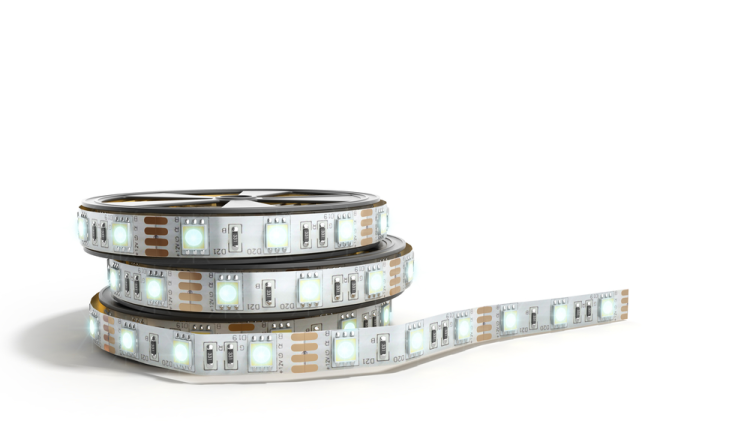Exploring LED Solutions: From Strip Lights to Modules — A Practical Guide
In recent years, LED lighting has transformed how we illuminate spaces, combining efficiency with versatility. Among the many options available, LED strip lights and LED modules stand out as two popular solutions that cater to diverse needs from decorative accents to functional lighting in commercial and industrial settings. This guide walks you through the essentials of these LED components, helping you understand their differences, uses, and how they complement each other in practical applications.
Understanding LED Strip Lights
LED strip lights are flexible circuit boards embedded with surface-mounted light-emitting diodes (LEDs). Their flexibility, thin profile, and easy installation make them a favorite for both residential and commercial lighting projects. Whether accentuating architectural features, creating ambient moods, or providing task lighting, strip lights offer a practical way to add illumination with style.
If you are looking for a reliable led strip lights supplier, it is important to consider factors such as product quality, customization options, and certifications. A trustworthy supplier can provide a range of options from waterproof strips for outdoor use to varying voltage levels suitable for different power sources. These considerations ensure that the strip lights perform well and last long in their intended environment.
A Closer Look at LED Modules
While LED strip lights offer flexibility, LED modules provide another approach to lighting that’s equally important. An LED module typically consists of a cluster of LEDs mounted on a rigid board, often enclosed in a protective housing. These modules are designed for applications requiring higher brightness, focused lighting, or more robust construction.
An led module is commonly used in signage, architectural lighting, and automotive applications due to its durability and concentrated light output. Their rigid design allows installation on uneven surfaces and in spaces where flexible strip lights may not be suitable, providing designers and installers with more options.
How LED Strip Lights and Modules Complement Each Other
In many lighting projects, LED strip lights and LED modules are used together to achieve the desired effect. For example, strip lights might provide ambient or accent lighting along edges and contours, while modules add bright, focused illumination to highlight signs or architectural elements.
This complementary use enhances both aesthetics and functionality. Combining the soft glow of strips with the punchy light of modules can create layered lighting designs that are visually appealing and practical. Understanding the strengths of each component helps in planning efficient lighting systems that make the most of their capabilities.
Technical Considerations for Choosing LED Components
When selecting LED strip lights or modules, certain technical factors deserve attention to ensure the lighting performs as expected. Voltage compatibility is crucial installing a 24V strip on a 12V power supply, for example, can cause malfunction or damage. Wattage and power consumption should also be matched to the power source and the scale of the project.
Waterproof ratings (IP ratings) indicate how well the lights resist moisture and dust. For outdoor or damp indoor areas like kitchens and bathrooms, waterproof products are a must. Color temperature options, ranging from warm white to cool white and even RGB (color-changing) variants, allow users to create different atmospheres and effects.
Quality certifications like CE, RoHS, and FCC provide added assurance that the LED components meet safety and environmental standards. Choosing products that comply with these standards helps avoid issues such as flickering, premature failure, or unsafe operation.
Emerging Trends in LED Lighting Solutions
The LED lighting market is continually evolving, driven by technological advances and changing user preferences. Energy efficiency remains a top priority, with newer LEDs consuming less power while delivering higher brightness. Smart lighting technologies, including controllable color temperatures and integration with home automation, are becoming increasingly common.
Customization is also on the rise, as more projects demand unique sizes, colors, and lighting effects. Suppliers who offer flexible options for LED strip lights and modules are better positioned to meet these needs, supporting innovative lighting designs in both residential and commercial spaces.
Sustainability trends encourage the use of LED products with longer lifespans and recyclable materials, reducing environmental impact. As awareness grows, selecting eco-friendly lighting components becomes a consideration alongside technical specifications.
Conclusion
LED strip lights and LED modules are essential tools in the modern lighting toolkit, each bringing distinct advantages that address different challenges. Strip lights impress with their flexibility and ease of use, while modules offer robust, focused illumination suited for demanding applications. Together, they provide versatile options that adapt to a wide range of lighting needs.
When planning a lighting project, understanding the characteristics and capabilities of these components helps ensure choices align with technical requirements and design goals. Whether illuminating a cozy home corner or powering up a large outdoor sign, thoughtful selection of LED strip lights and modules contributes to effective, energy-efficient, and visually appealing results.


Comments are closed.